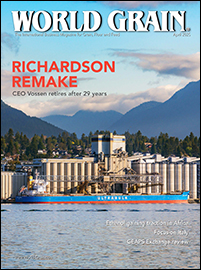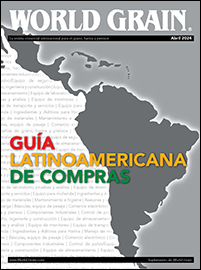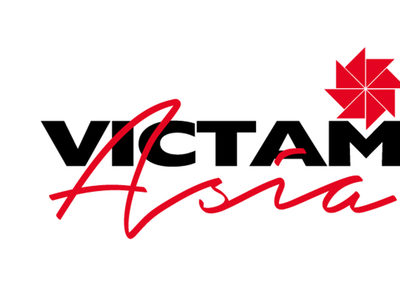Red countries (67) have legislation for wheat flour,
Green countries (14) have legislation for wheat flour and maize flour,
Orange countries (3) have legislation for wheat flour, maize flour and rice flour,
Yellow country (1) have legislation for rice.
In 2002, when the Flour Fortification Initiative (FFI) began, 44 countries had legislation to fortify wheat flour. According to FFI, at the end of 2016, 87 countries had legislation to mandate fortification of at least one industrially milled cereal grain (see Figure 1, below). Of these, 86 countries fortify wheat flour alone or in combination with other grains.
Most of these countries mandate fortification of wheat and maize flour with at least iron and folic acid, with a few exceptions: Australia does not require flour fortification with iron, and Congo, Nigeria, the Philippines, the United Kingdom, and Venezuela do not require fortification of flour with folic acid.
The Food Fortification Initiative
In global success of flour fortification programs, alongside WHO, FAO and U.S. CDC, efforts of the Food Fortification Initiative should also be appreciated. FFI is an international partnership working to improve health through fortification of industrially milled grain products, specifically wheat flour, maize flour and rice.
The first public meeting to organize global efforts to fortify flour was a Policy Planning Forum in 2002. That meeting already reflected the partnership with Emory University, the U.S. CDC, the Micronutrient Initiative, and the International Association of Operative Millers (IAOM). By 2003, this movement was called the Flour Fortification Initiative, and in 2014 FFI was renamed to the Food Fortification Initiative to account for the inclusion of rice into FFI’s scope of work.
FFI is committed to include the public, private and civic sectors in the opportunity to improve public health by fortifying flour with essential vitamins and minerals.
Regional Cases on Flour Fortification
As an indicator of how well grain fortification programs are implemented, each year FFI estimates the amount of industrially milled wheat flour as well as maize flour, and rice that is fortified. Table I (right) shows estimates for 2016 and 2015, including fortification in mandatory programs as well as voluntary efforts.
Currently, 87 countries have legislation to mandate fortification of at least one industrially milled cereal grain. Now we will review some cases from different regions.
2: tonnes of wheat equivalent; FFI calculations.
3: tonnes of wheat equivalent; FAO data from 2011 used for the 2015 estimates; FAO data from 2013 used for 2016 estimates.
4: FFI calculations.
Africa
In early 2011, FFI conducted an exhaustive analysis of flour fortification opportunities in Africa and found that seven countries were fortifying at least 75% of their industrially milled wheat flour. FFI believes that currently 19 countries are fortifying at least 75% of their industrially milled wheat flour with at least iron and folic acid at levels that are expected to make a health impact. In Africa, South Africa and Nigeria were the first two countries to fortify flour and then Benin, Burkina Faso, Burundi, Cameroon, Cape Verde, Congo, Cote d’Ivoire, Djibouti, Egypt, Ghana, Guinea, Kenya, Liberia, Malawi, Mali, Mauritania, Morocco, Mozambique, Niger, Senegal, Sierra Leone, Tanzania, United Republic of Togo, Uganda and Zimbabwe followed these countries.
Europe
The European Union Regulation No 1925/2006 states that mandatory fortification using specified vitamins and minerals is permitted for “certain ordinary foods” to address public health concerns. However, most national governments in the European region have opted for voluntary fortification or supplementation programs in lieu of mandatory flour fortification.
In the Western part of Europe, the United Kingdom is the only country that ascribes to mandatory flour fortification practices. Mandatory folic acid supplementation of flour in the U.K. was recommended by the Royal College of Obstetricians and Gynaecologists (RCOG) in 1997 and this position was supported in 2000 by the Committee on Medical Aspects of Food and Nutrition Policy. However, fortification of flour with folic acid in the U.K. is called an overdue public health measure in the U.K.
Currently, in Europe only Kosovo, Moldova and United Kingdom have legislations that mandate wheat flour fortification.
Asia
In Asia, FFI finds that wheat flour consumption is increasing with the popularity of instant noodles. Also, with increasing incomes, people want to diversify their diets by adding foods made with wheat. Most often, however, fortification gets overlooked on the list of other health intervention strategies to consider.
In Asia, only Indonesia, Kazakhstan, Kyrgyzstan, Nepal, Philippines, Turkmenistan, Uzbekistan and Vietnam have legislation for mandating fortification of wheat flour. Turkmenistan has been reported as particularly successful with 93% of its flour currently fortified.
In India, early in 2016 the Food Safety and Standards Authority of India (FSSAI) drafted fortification standards for rice and wheat flour. The FSSAI then published revised draft standards for wheat flour fortification in October 2016 following the WHO recommendations for iron, folic acid, and vitamin B12.
The results of the study conducted by FFI in India showed that 7.6% of the industrially milled flour is fortified in the country, which means the remaining flour represents great potential for improving health.
Middle East
Several countries in this region already have mandatory flour fortification, and some have been fortifying flour for more than 10 years.
Currently in this region, only Bahrain, Iran, Iraq, Jordan, Kuwait, Oman, Palestine, Saudi Arabia and Yemen apply mandatory fortification for wheat flour.
A study to examine changes in the prevalence of anemia in Jordan showed that the public health problem of childhood anemia declined from severe in 2007 to moderate in 2009, after the implementation of wheat flour fortification with multiple micronutrients in Jordan.
The Americas
According to FFI, Costa Rica and the United States are leaders in global grain fortification as they are the only countries with legislative requirements to fortify wheat flour, maize flour and rice.
Most countries in the Americas have been fortifying wheat flour for several decades, including Antigua and Barbuda, Argentina, Bahamas, Barbados, Belize, Bolivia, Brazil, Canada, Chile, Colombia, Costa Rica, Cuba, Dominica, Dominican Republic, Ecuador, El Salvador, Grenada, Guatemala, Guyana, Haiti, Honduras, Jamaica, Mexico, Nicaragua, Panama, Paraguay, Peru, Saint Kitts and Nevis, Saint Lucia, Saint Vincent and the Grenadines, Suriname, Trinidad and Tobago, United States, Uruguay and Venezuela.
In the United States, the laws of 33 states and one territory require enrichment of flour with thiamine, riboflavin, niacin, folic acid, iron and, optionally, calcium.
In Brazil, the mandatory fortification of foods with iron was initiated in 2004; wheat and maize flour was selected as the major vehicle for iron, and it is reported that the mandatory fortification of wheat and maize flour with iron significantly furthered the reduction in the prevalence of inadequate intake, except among women of reproductive age, and changed the main contributors to this nutrient in the studied population.
FFI has done some exploratory work in this region and found a need for better internal and external monitoring for quality assurance, in Latin America in particular, and will begin exploring avenues to encourage appropriate monitoring systems.
Pacific
In the Pacific region, only Australia, Fiji, Kiribati and Solomon Islands mandates fortification of wheat flour.
Among other countries in the region, Fiji has had great success fortifying wheat flour. It reduced the prevalence of anemia in women of child bearing age from 40.3% to 27.6% from 2004 to 2010 after fortification of wheat flour with iron, folate and zinc.
In Australia, wheat flour fortification led to a 77% reduction in the prevalence of low serum folate levels, according to a 2011 study.
Future Strategies
Wheat flour fortification is a preventive food-based approach to improve micronutrient status of populations over time that can be integrated with other interventions in the efforts to reduce vitamin and mineral deficiencies when identified as public health problems. Wheat flour fortification programs could be expected to be most effective in achieving a public health impact if mandated at the national level and can help achieve international public health goals.
Decisions about which nutrients to add and the appropriate amounts to add to fortify flour should be based on a series of factors, including the nutritional needs and deficiencies of the population; the usual consumption profile of “fortifiable” flour (i.e. the total estimated amount of flour milled by industrial roller mills, produced domestically or imported, which could in principle be fortified); sensory and physical effects of the fortificant nutrients on flour and flour products; fortification of other food vehicles; population consumption of vitamin and mineral supplements; and costs.
Flour fortification programs should include appropriate Quality Assurance and Quality Control (QA/QC) programs at mills as well as regulatory and public health monitoring of the nutrient content of fortified foods and assessment of the nutritional/health impacts of the fortification strategies.
In addition to those requirements, to have a sustainable and successful flour fortification program, local culture and multi-sector national fortification alliances are also of the utmost importance.
On top of them, further actions are required to reach the World Health Assembly target of a 50% reduction of anemia in women of reproductive age by 2025.
In conclusion, flour millers not only have the responsibility to feed billions of people, but also to make them healthier.







